So Long Snow 2022
The End of the Road Part One
The first destination of our 2022 getaway will also serve as some of our last in an upcoming blog series. Some time next year we hope to check off as many historic cities as we can along the Great River Road during several mini-trips. So stay tuned!
The first stop of our 2022 winter getaway was a visit with my cousin near New Orleans. She was a great tour guide and we spent most of our time along the mighty Mississippi. Plantations, traditions, some history, and scrumptious seafood were great ways to get this road trip started!
Click on the first photo in each group and scroll to see the square photos at full size.
If you’ve been following this blog, you probably already know that since Jim’s retirement we’ve been able to Escape the Tundra in 2019 and Dodge the Deep Freeze in 2020. We cut our trip short in 2020 and canceled it altogether in 2021 due to Covid, but we were back on the road again in January of this year!
While our youngest daughter is more sensible, her older sister and family head up north every year to get closer to the snow. They can’t wait for that shit to pile up high so they can run their snowmobiles until their noses are numb.
Jim and I on the other hand, prefer to avoid snow altogether if possible. And while you have to go even farther south than Arizona or Florida to guarantee swimming-pool-weather during the worst of winter, we’ll take a bump in temperatures from frigid to chilly in our flip flops any time. As you may have guessed, at the rest stop below we hadn’t changed into our flip flops quite yet.
On the Road Again!
After an overnight in West Memphis we arrived in Slidell, LA at my cousin’s house. Turns out Darlene is a great tour guide and very knowledgeable about the area. A mound of seafood at a local restaurant started off our visit, with King Cake for dessert.
 King Cake is a New Orleans Mardi Gras tradition, where a small plastic baby is baked inside a pastry that is similar to a Wisconsin Kringle. Once baked, it is slathered with frosting and sprinkled with sugar the colors of Mardi Gras!
King Cake is a New Orleans Mardi Gras tradition, where a small plastic baby is baked inside a pastry that is similar to a Wisconsin Kringle. Once baked, it is slathered with frosting and sprinkled with sugar the colors of Mardi Gras!
At a party, the person who gets the slice of cake with the baby inside has to host the next party. Since Darlene bought ours at a bakery, they left the baby on the side. The cake was delicious – even more so without the plastic taste from a melted baby!
Two Things became Evident
- The Mississippi River runs west to east? The map is somewhat skewed so the river will fit nicely into its horizontal frame. BUT there are sections (especially near New Orleans) where the river actually DOES run west to east. Darlene explained that the Mississippi (from top to bottom) only has east and west banks, even when they appear to be on the north or south sides of the river.
- That’s a lot of plantations! At one time there were nearly 350 plantations (from small farmhouses to mansions) along the banks of the mighty Mississippi, each with just a sliver of river frontage for shipping and receiving harvests and supplies. They required lots of help to plant and harvest their crops, and Louisiana became the wealthiest state in the nation due to the hard (free) labor of thousands of slaves. The end of slavery left most large plantations unprofitable and the Civil War, floods and hurricanes left many abandoned. Today, there are only a dozen or so plantation homes that are open to the public for tours, and many are being more honest about the realities of that time period.
Oak Alley Plantation – a National Historic Landmark
“While the alley trees are very old – approximately 300 years – the average age for a Live Oak is 600 years, making these only middle aged! There are 28 trees, to match the 28 columns on the “Big House”. Each tree in the alley is named after a person who owned Oak Alley Plantation at one time over its 170 year history.” ~ READ MORE
It’s easy to see how the fabulous Oak Alley Plantation got its name. And this is after Hurricane Ida ravaged the area in August of 2021 – just five months ago. It is surely a testimony to the strength of these massive trees that they are still standing after speculation that Ida was still a Category 3 storm when it hit this area in St. James Parish. ~ READ MORE
“A sugar plantation; an abandoned investment property; a cattle ranch; a landscape of defiance in the face of the Army Corps of Engineers – Oak Alley has been many things in its over 200 years of history. Today it is a historic site, dedicated to preserving and interpreting each chapter of this plantation’s memory.” ~ READ MORE
We drove into the visitor entrance around back to snoop around a bit. The grounds were just beautiful with a view of the backside of the house (above), a great gift shop and a few cottages for overnight stays. We enjoyed a superb lunch at the Oak Alley Restaurant & Inn and on our way out of the property, we stopped along the road to get a side view – unobstructed by the oaks (below).
Laura Plantation – Louisiana’s Creole Heritage Site
Darlene had heard from a friend (and the Welcome Center woman confirmed) that the tour of Laura Plantation was excellent. Since Darlene had not been there, we chose to check out only the exterior of the beautiful Oak Alley and spend more time here. Turns out that was a great decision – although very sobering. Some of topics were hard to hear, but they should not be swept under the rug.
“From the Big House to the Quarters: Slavery on Laura Plantation: When Laura Plantation opened to the public in 1994, it became the first historic attraction in Louisiana to include stories of enslaved Africans as part of the tour. As the leading interpreter of the experience of enslaved people in Louisiana and following years of extensive research in the United States and France, in February 2017, Laura Plantation opened a permanent exhibit dedicated to telling the authentic story of the enslaved community of this Créole farm.” ~ READ MORE
A Little History
The history of Laura Plantation is complicated, but very interesting and well documented in the book “Memories of the Old Plantation Home” by Laura Locoul Gore. Guillaume Duparc married Nanette Prud’homme. Nanette’s was one of Louisiana’s oldest Creole families and Duparc was a French, highly decorated naval veteran of the American Revolution.
Duparc acquired this property in 1804. After buying up additional acreage nearby, his now 12,000 acre sugar-farming complex was located on higher ground and was named l’habitation Duparc. Following Duparc’s death in 1808, Nanette took over daily operations, becoming the first of four generations of women to run the plantation.
St. James Parish Welcome Center
A huge structure outside the St. James Parish Welcome Center made us very curious and Darlene was quick to fill us in. Most everyone loves to drive thru local neighborhoods during the holidays to look at Christmas lights, right? Well, this is a step up! All along the Great River Road between Baton Rouge and New Orleans (with the greatest concentration right here in St. James Parish), structures built by families and friends are moved to the top of the earthen levees of the Mississippi. On Christmas Eve, all of them are set ablaze!
“The Christmas bonfires, as locals call them, are mostly pyramid-shaped, but some can be more fanciful assemblages paying tribute to the river’s heritage — shapes ranging from miniature plantation homes to tiny replica paddlewheel steamships. Bonfires are built by families, friends and co-workers who visit, cook and mingle between the fires. It’s a local celebration with an environment akin to football tailgating, and the practice has continued for generations.” ~ READ MORE
The structure below is an example of one of the 20-feet-high, soon-to-be flaming, pyramids of burning logs! You may ask why? To guide Papa Noel (Santa) to the good boys and girls on Christmas Eve, of course!
Lot of Goodies and a Chilly Walk
The rest of the visit included a bagful of pamphlets, an old steam train, several historic outbuildings that were very cool and a boardwalk along the water. The walk would have been much more enjoyable on a warmer (sunnier) day, but it was still a great stop!
Chalmette Cemetery/Battlefield
We arrived at the Chalmette Battlefield just a little too late, but since the Cemetery was still open, we had a very somber visit in this beautiful place. 15,000 veterans from American wars and their dependents are buried here, among which 6,773 are unknown.
Chalmette National Cemetery
“Established in 1864, Chalmette National Cemetery is one of the oldest national cemeteries and one of 14 national cemeteries managed by the National Park Service. Just two miles east of New Orleans on a flat parcel of land located along the banks of the Mississippi River, the cemetery is an integral part of both the history of New Orleans and of the nation. Its graves recount various conflicts throughout American history, from the War of 1812, the Civil War, and the Vietnam War. The landscape also tells the story of the innovative measures used to control the Mississippi River, and the grim consequences when those innovations failed. Today, the cemetery is a part of the Jean Lafitte National Historical Park and Preserve.
Chalmette National Battlefield
The national cemetery lies adjacent to the Chalmette Battlefield, the site of the Battle of New Orleans on January 8, 1815. The battle is associated with the War of 1812, fought between the United States and Great Britain. A British invasion force attempted to seize control of New Orleans and lay claim to the land of the Louisiana Purchase. U.S. forces, under the command of future president Andrew Jackson, successfully defended the city against the larger and more experienced British army. In addition to a tactical success, the battle became a symbol of the young democracy in triumph over the European monarchy and aristocracy. The battle occurred after the signing of the Treaty of Ghent, the peace treaty signed by the United States and Great Britain in December 1814. Since the treaty had not yet been ratified by both sides, a British victory in the battle could have stalled the peace negotiations. News of the cessation of hostilities did not reach New Orleans until February 1815.
Preserved today as a unit of the National Park System, Chalmette Battlefield is managed by Jean Lafitte National Historical Park and Preserve. Visitors to the battlefield can view a re-creation of the earthwork that protected American troops from British forces. Period and replica cannons illustrate the weaponry used during the battle. The Chalmette Monument pays tribute to the Americans who fought in the battle. A new visitor center opened in December 2010.
During the Civil War, both Union and Confederate troops camped on the land that would later become the national cemetery. After the capture of New Orleans by Union forces in May 1862, the site became a refugee camp for freed slaves and later a burial ground for former slaves, black hospital patients, and both Union and Confederate troops. The city of New Orleans, which owned the property, donated the land in May 1864 to the Federal Government for use as a national cemetery.” ~ READ MORE
Time for a Break
We ended this big day on the waterfront near Lake Pontchartrain at Phil’s Marina Cafe back in Slidell. The sunset AND the seafood were just spectacular! Thanks for the visit Darlene! We’ll see you again soon!
Next up: The End of the Road Part Two
Happy trails,
Barb

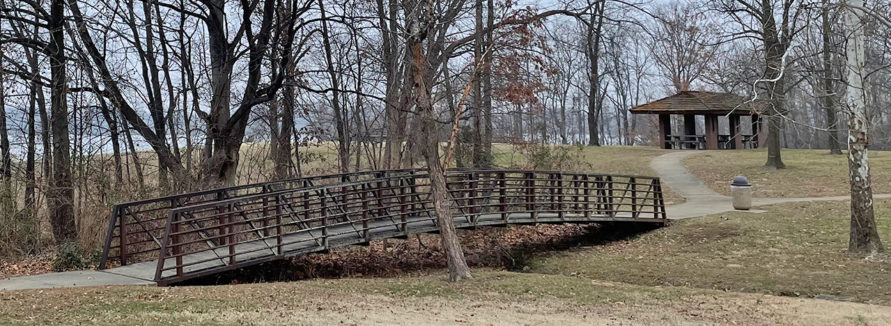

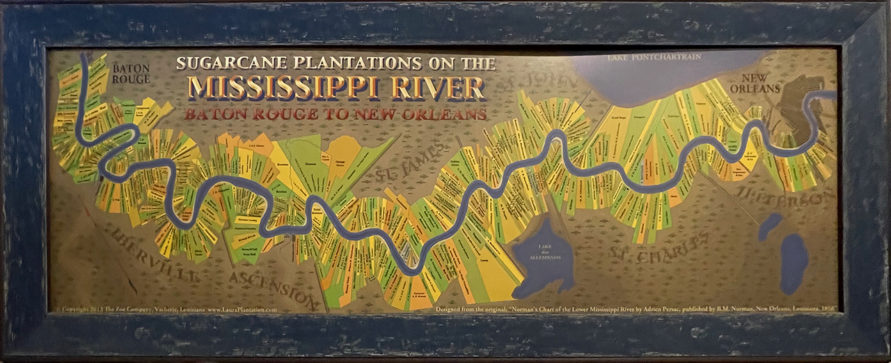
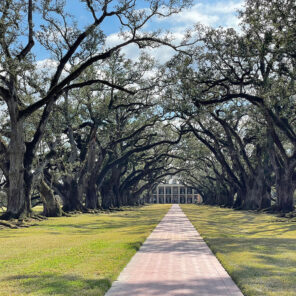

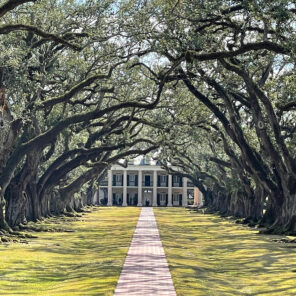

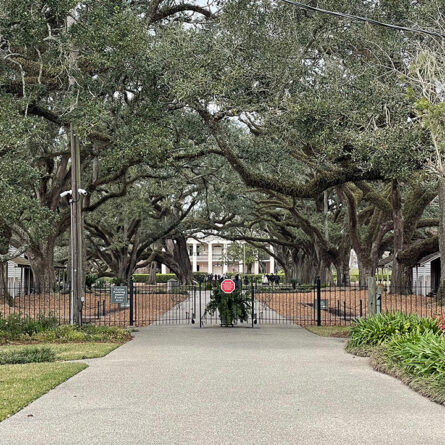
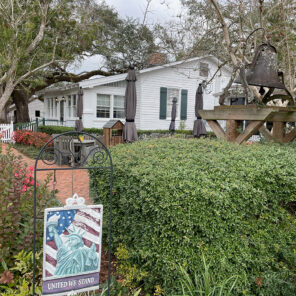
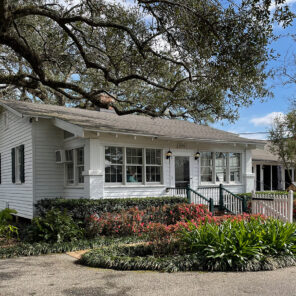
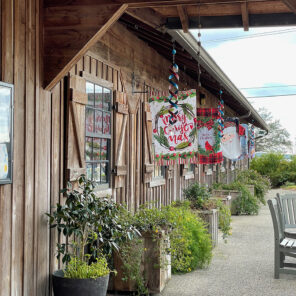
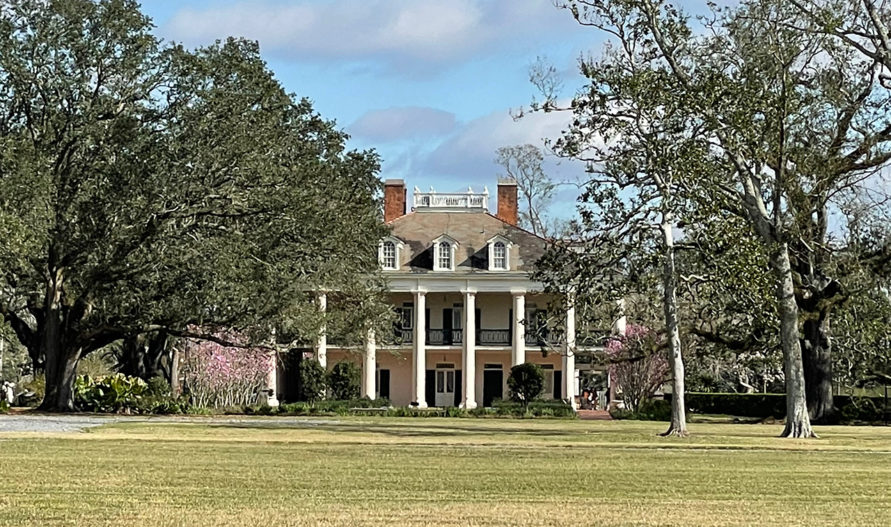

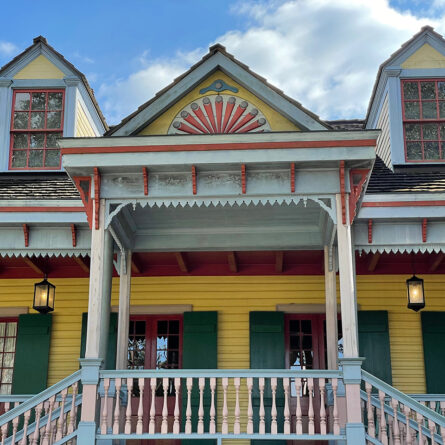

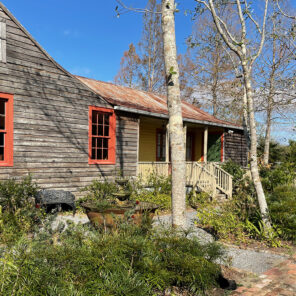
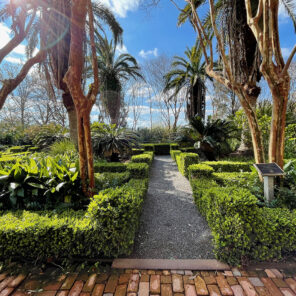

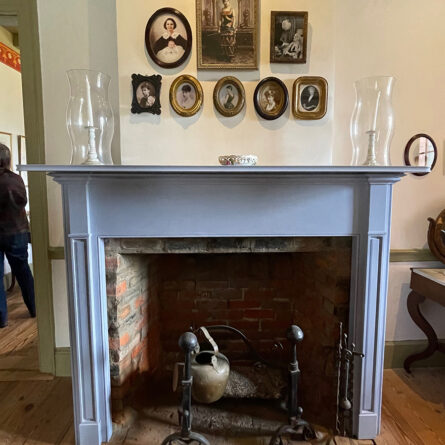


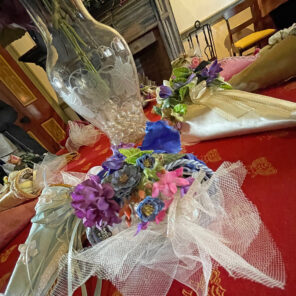






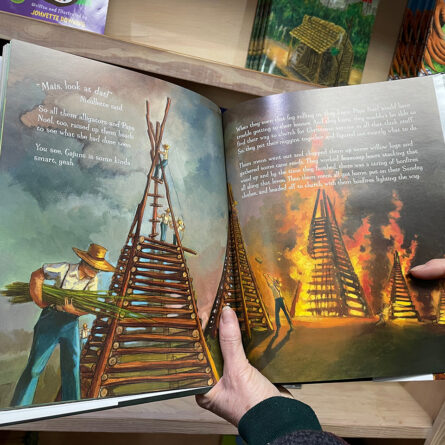
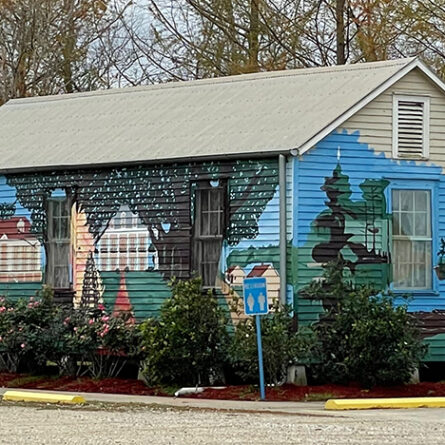

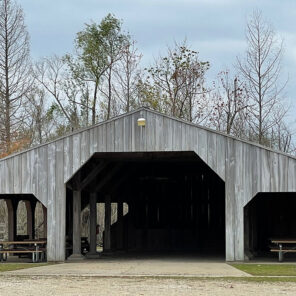



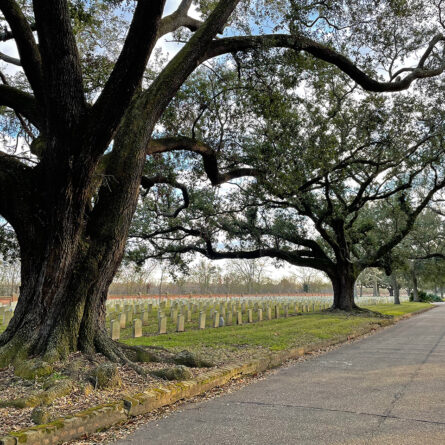
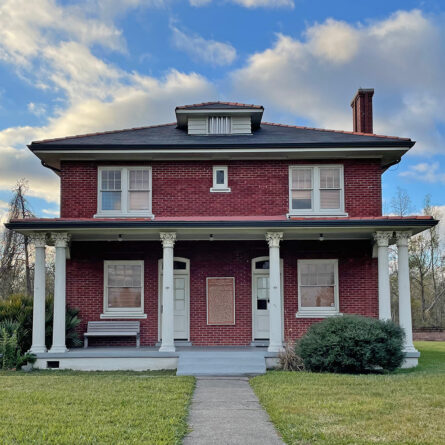
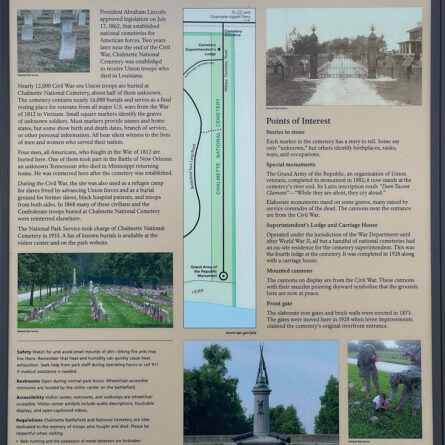
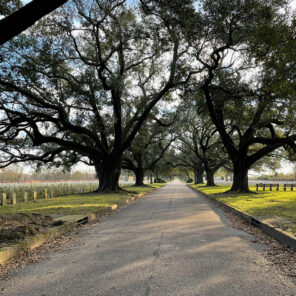
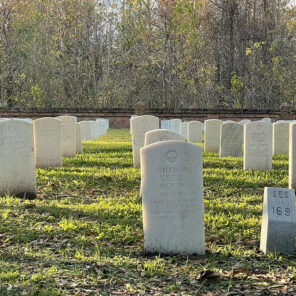
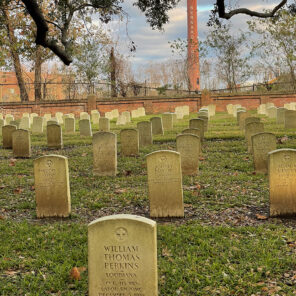
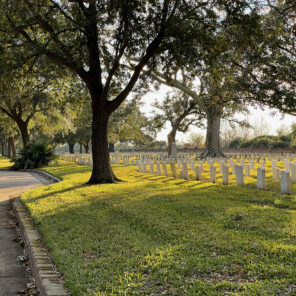
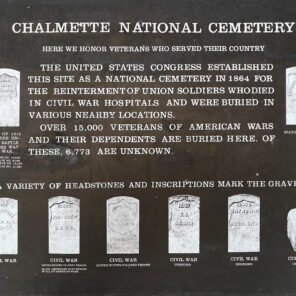
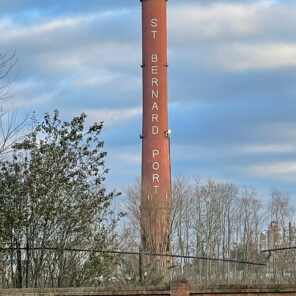
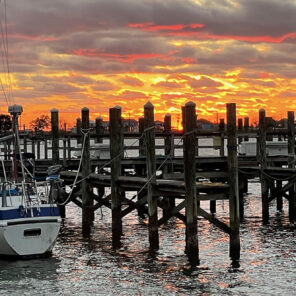

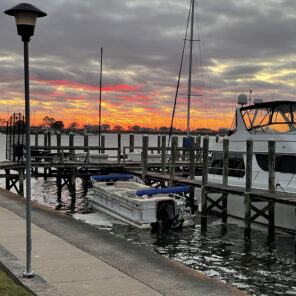

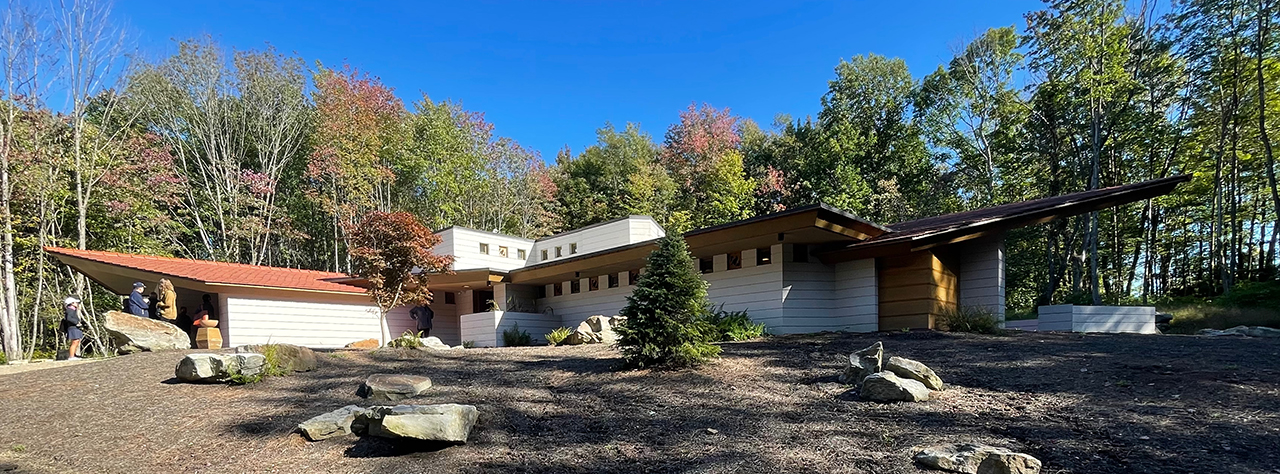
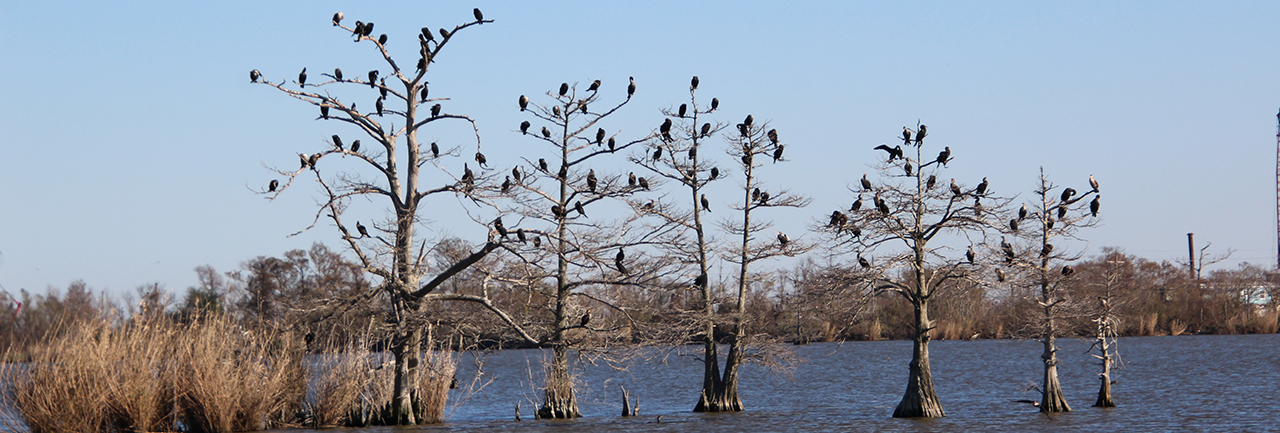



Comments are closed here.